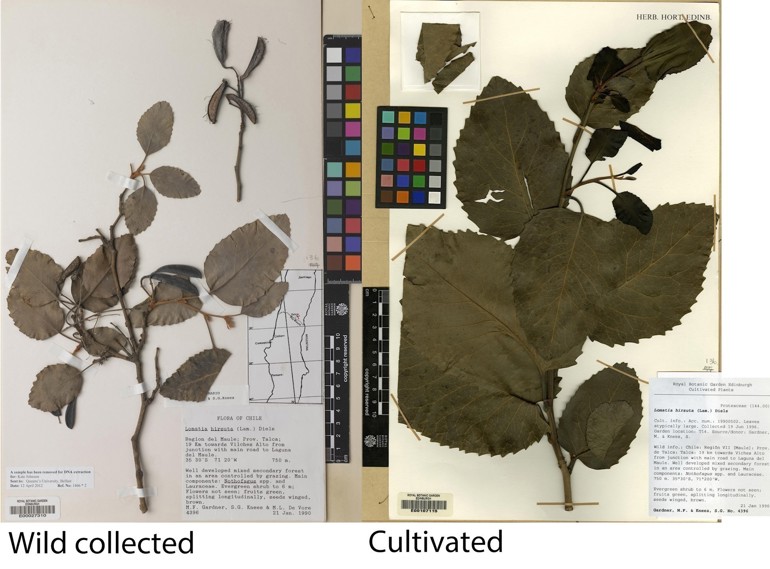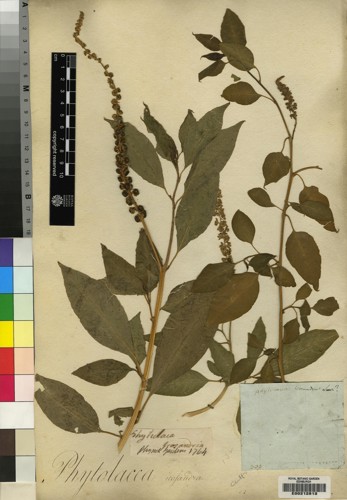The cultivated herbarium helps facilitate ‘a gold standard’ reference collection within RBGE. Not only do these cultivated specimens act as an identification reference to the living collection i.e. where plant material has been requested for research purposes, it also provides supplementary material that might not always be possible to collect in the wild. These specimens are used for research purposes long after the living plant has died.
A cultivated specimen is a voucher specimen that has been made from a plant grown in a botanic garden, nursery or public garden, as opposed to one collected directly from the wild – although the plant or seed may have been originally collected in the wild. Any vouchers made from plants grown at RBGE are designated as cultivated specimens.
Why do we make cultivated specimens?
It may not always be possible to collect a voucher specimen in the field. If only seeds or cuttings have been collected, this material can be grown on by specialist horticultural staff at RBGE. Cultivated specimens can then be collected and used as reference to the living plant.
It is only by studying a full range of characters that taxonomists can understand the variation of a species. The cultivated specimens can enhance the value of a wild collected specimen as they often show morphological features not generally present in field collected material. E.g. early growth stages such as cotyledons, juvenile growth, or even flowering or fruiting stages, rarely observed in the wild. In some cases specimens can show adaptation to varying environmental conditions provided by cultivation.
Cultivated specimens now play an important role in molecular research; as most scientific journals require the citation of voucher herbarium specimens. Each RBGE cultivated specimen is linked directly to the living collection. Therefore, as a matter of best practise when a request for material from the living collection is received, a herbarium voucher is also collected at the same time to act as a reference to the identification of the plant.

Image: Comparison of wild collected and cultivated specimens of Lomatia hirsuta ssp. obliqua
The collection acts as an accurate record of changes which may occur in the life history of a plant, e.g. changes from one gender to another which happens in some dioecious taxa.
When new plant species are discovered through research work involving the living collections, the cultivated herbarium specimen taken from the living collection is designated the ‘Type’ or 'Standard' specimen for the species.
Annotating Cultivated Specimens
Each cultivated specimen is allocated a cultivated collector and number. This information along with garden location, date of collection and description of the living plant is entered into the RBGE collections database. A label for the specimen is produced which includes both the cultivated collection information and the original wild collection information. It is the cultivated collector and number that are cited in scientific publications.
One of the oldest cultivated specimens on RBGE’s database is the Red Ink Plant, Phytolacca icosandra L., a tropical pokeweed native to Mexico, Central and South America. This specimen is thought to have been collected in 1764 from RBGE’s third location, Haddington Place, near Leith Walk, Edinburgh.


